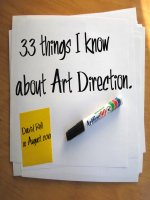100 THINGS DESIGNER NEES TO KNOW ABOUT PEOPLE
Bạn đang xem bản rút gọn của tài liệu. Xem và tải ngay bản đầy đủ của tài liệu tại đây (1.02 MB, 39 trang )
SECOND EDITION
100 THINGS
EVERY
DESIGNER
KNOW
ABOUT
NEEDS TO
PEOPLE
SUSAN M. WEINSCHENK, Ph.D.
100 Things Every Designer Needs to Know About People
Susan Weinschenk
Peachpit Press
www.peachpit.com
Copyright © 2020 by Susan Weinschenk. All Rights Reserved.
Peachpit Press is an imprint of Pearson Education, Inc.
To report errors, please send a note to
Notice of Rights
This publication is protected by copyright, and permission should be obtained from the publisher prior to any
prohibited reproduction, storage in a retrieval system, or transmission in any form or by any means, electronic,
mechanical, photocopying, recording, or otherwise. For information regarding permissions, request forms and the
appropriate contacts within the Pearson Education Global Rights & Permissions department, please visit www.
pearson.com/permissions.
Notice of Liability
The information in this book is distributed on an “As Is” basis, without warranty. While every precaution has been
taken in the preparation of the book, neither the author nor Peachpit shall have any liability to any person or entity
with respect to any loss or damage caused or alleged to be caused directly or indirectly by the instructions contained in this book or by the computer software and hardware products described in it.
Trademarks
Unless otherwise indicated herein, any third party trademarks that may appear in this work are the property of
their respective owners and any references to third party trademarks, logos or other trade dress are for demonstrative or descriptive purposes only. Such references are not intended to imply any sponsorship, endorsement,
authorization, or promotion of Pearson Education, Inc. products by the owners of such marks, or any relationship
between the owner and Pearson Education, Inc., or its affiliates, authors, licensees or distributors.
Executive Editor: Laura Norman
Development Editor: Jeff Riley
Senior Production Editor: Tracey Croom
Copy Editor: Scout Festa
Compositor: Maureen Forys, Happenstance Type-O-Rama
Proofreader: Kim Wimpsett
Indexer: James Minkin
Cover Design: Mimi Heft with Chuti Prasertsith
Interior Design: Maureen Forys, Happenstance Type-O-Rama
ISBN 13: 978-0-13-674691-1
ISBN 10: 0-13-674691-8
ScoutAutomatedPrintCode
CONTENTS
THE PSYCHOLOGY OF DESIGN
xv
HOW PEOPLE SEE
1
WHAT YOU SEE ISN’T WHAT YOUR BRAIN GETS
2
PERIPHERAL VISION IS USED MORE THAN CENTRAL VISION
2
TO GET THE GIST OF WHAT YOU SEE
5
3
PEOPLE IDENTIFY OBJECTS BY RECOGNIZING PATTERNS
8
4
THERE’S A SPECIAL PART OF THE BRAIN JUST FOR
RECOGNIZING FACES
5
10
THERE’S A SPECIAL PART OF THE BRAIN FOR PROCESSING
SIMPLE VISUAL FEATURES
6
13
PEOPLE SCAN SCREENS BASED ON PAST EXPERIENCE AND
EXPECTATIONS
15
7
PEOPLE SEE CUES THAT TELL THEM WHAT TO DO WITH AN OBJECT
17
8
PEOPLE CAN MISS CHANGES IN THEIR VISUAL FIELDS
21
9
PEOPLE BELIEVE THAT THINGS THAT ARE CLOSE TOGETHER BELONG
TOGETHER
23
10
RED AND BLUE TOGETHER ARE HARD ON THE EYES
24
11
NINE PERCENT OF MEN AND ONE-HALF PERCENT OF
12
WOMEN ARE COLOR-BLIND
25
COLORS MEAN DIFFERENT THINGS TO DIFFERENT CULTURES
29
HOW PEOPLE READ
13
14
IT’S A MYTH THAT WORDS IN ALL CAPS ARE INHERENTLY
HARD TO READ
32
READING AND COMPREHENDING ARE TWO DIFFERENT THINGS
35
v
15
PATTERN RECOGNITION HELPS PEOPLE IDENTIFY LETTERS IN
DIFFERENT FONTS
40
16
FONT SIZE MATTERS
43
17
READING A SCREEN IS HARDER THAN READING PAPER
45
18
PEOPLE READ FASTER WITH A LONGER LINE LENGTH,
BUT THEY PREFER A SHORTER LINE LENGTH
46
HOW PEOPLE REMEMBER
19
SHORT-TERM MEMORY IS LIMITED
50
20
PEOPLE REMEMBER ONLY FOUR ITEMS AT ONCE
52
21
PEOPLE HAVE TO USE INFORMATION TO MAKE IT STICK
55
22
IT’S EASIER TO RECOGNIZE INFORMATION THAN RECALL IT
57
23
MEMORY TAKES A LOT OF MENTAL RESOURCES
59
24
PEOPLE RECONSTRUCT MEMORIES EACH TIME THEY REMEMBER THEM
61
25
IT’S A GOOD THING THAT PEOPLE FORGET
63
26
THE MOST VIVID MEMORIES ARE WRONG
65
HOW PEOPLE THINK
27
PEOPLE PROCESS INFORMATION BETTER IN BITE-SIZED CHUNKS
28
SOME TYPES OF MENTAL PROCESSING ARE MORE CHALLENGING
68
THAN OTHERS
71
29
MINDS WANDER 30 PERCENT OF THE TIME
74
30
THE MORE UNCERTAIN PEOPLE ARE, THE MORE THEY
DEFEND THEIR IDEAS
76
31
PEOPLE CREATE MENTAL MODELS
78
32
PEOPLE INTERACT WITH CONCEPTUAL MODELS
80
33
PEOPLE PROCESS INFORMATION BEST IN STORY FORM
82
34
35
PEOPLE LEARN BEST FROM EXAMPLES
PEOPLE ARE DRIVEN TO CREATE CATEGORIES
85
87
36
TIME IS RELATIVE
37
PEOPLE SCREEN OUT INFORMATION THAT DOESN’T FIT
89
THEIR BELIEFS
91
38
PEOPLE CAN BE IN A FLOW STATE
93
39
CULTURE AFFECTS HOW PEOPLE THINK
95
HOW PEOPLE FOCUS THEIR ATTENTION
40
ATTENTION IS SELECTIVE
98
41
PEOPLE HABITUATE TO INFORMATION
100
42
WELL-PRACTICED SKILLS DON’T REQUIRE CONSCIOUS ATTENTION
101
43
EXPECTATIONS OF FREQUENCY AFFECT ATTENTION
103
44
SUSTAINED ATTENTION LASTS ABOUT 10 MINUTES
105
45
PEOPLE PAY ATTENTION ONLY TO SALIENT CUES
106
46
PEOPLE ARE WORSE AT MULTITASKING THAN THEY THINK
107
47
DANGER, FOOD, SEX, MOVEMENT, FACES, AND STORIES GET
THE MOST ATTENTION
110
48
LOUD NOISES STARTLE AND GET ATTENTION
112
49
FOR PEOPLE TO PAY ATTENTION TO SOMETHING, THEY MUST
FIRST PERCEIVE IT
114
WHAT MOTIVATES PEOPLE
50
PEOPLE ARE MORE MOTIVATED AS THEY GET CLOSER TO A GOAL
118
51
VARIABLE REWARDS ARE POWERFUL
120
52
DOPAMINE STIMULATES THE SEEKING OF INFORMATION
123
53
UNPREDICTABILITY KEEPS PEOPLE SEARCHING
125
54
PEOPLE ARE MORE MOTIVATED BY INTRINSIC REWARDS
THAN BY EXTRINSIC REWARDS
127
55
PEOPLE ARE MOTIVATED BY PROGRESS, MASTERY, AND CONTROL
129
56
PEOPLE ARE MOTIVATED BY SOCIAL NORMS
131
57
PEOPLE ARE INHERENTLY LAZY
58
PEOPLE WILL LOOK FOR SHORTCUTS ONLY IF THE SHORTCUTS
132
ARE EASY
135
59
PEOPLE ASSUME IT’S YOU, NOT THE SITUATION
136
60
FORMING OR CHANGING A HABIT IS EASIER THAN YOU THINK
138
61
PEOPLE ARE MORE MOTIVATED TO COMPETE WHEN THERE
62
ARE FEWER COMPETITORS
140
PEOPLE ARE MOTIVATED BY AUTONOMY
142
PEOPLE ARE SOCIAL ANIMALS
63
THE “STRONG TIE” GROUP SIZE LIMIT IS 150 PEOPLE
144
64
PEOPLE ARE HARD WIRED FOR IMITATION AND EMPATHY
147
65
DOING THINGS TOGETHER BONDS PEOPLE TOGETHER
149
66
PEOPLE EXPECT ONLINE INTERACTIONS TO FOLLOW SOCIAL RULES 151
67
PEOPLE LIE TO DIFFERING DEGREES DEPENDING ON THE MEDIUM
68
SPEAKERS’ BRAINS AND LISTENERS’ BRAINS SYNC UP
DURING COMMUNICATION
153
156
69
THE BRAIN RESPONDS UNIQUELY TO PEOPLE YOU KNOW PERSONALLY157
70
LAUGHTER BONDS PEOPLE TOGETHER
71
PEOPLE CAN TELL WHEN A SMILE IS REAL OR FAKE MORE
ACCURATELY WITH VIDEO
159
162
HOW PEOPLE FEEL
72
SOME EMOTIONS MAY BE UNIVERSAL
166
73
POSITIVE FEELINGS ABOUT A GROUP CAN LEAD TO GROUPTHINK
169
74
STORIES AND ANECDOTES PERSUADE MORE THAN DATA ALONE
170
75
IF PEOPLE CAN’T FEEL, THEN THEY CAN’T DECIDE
171
76
77
PEOPLE ARE PROGRAMMED TO ENJOY SURPRISES
PEOPLE ARE HAPPIER WHEN THEY’RE BUSY
173
175
78
PASTORAL SCENES MAKE PEOPLE HAPPY
177
79
PEOPLE USE “LOOK AND FEEL” AS THEIR FIRST INDICATOR OF TRUST179
80
LISTENING TO MUSIC RELEASES DOPAMINE IN THE BRAIN
81
THE MORE DIFFICULT SOMETHING IS TO ACHIEVE,
181
THE MORE PEOPLE LIKE IT
182
82
PEOPLE OVERESTIMATE REACTIONS TO FUTURE EVENTS
184
83
PEOPLE FEEL MORE POSITIVE BEFORE AND AFTER AN EVENT
84
THAN DURING IT
185
PEOPLE WANT WHAT IS FAMILIAR WHEN THEY’RE SAD OR SCARED
187
PEOPLE MAKE MISTAKES
85
PEOPLE WILL ALWAYS MAKE MISTAKES; THERE IS NO FAIL-SAFE
PRODUCT
190
86
PEOPLE MAKE ERRORS WHEN THEY ARE UNDER STRESS
192
87
NOT ALL MISTAKES ARE BAD
196
88
PEOPLE MAKE PREDICTABLE TYPES OF ERRORS
197
89
PEOPLE USE DIFFERENT ERROR STRATEGIES
200
HOW PEOPLE DECIDE
98
90
PEOPLE MAKE MOST DECISIONS UNCONSCIOUSLY
204
91
THE UNCONSCIOUS KNOWS FIRST
206
92
PEOPLE WANT MORE CHOICES AND INFORMATION THAN
THEY CAN PROCESS
208
93
PEOPLE THINK CHOICE EQUALS CONTROL
210
94
PEOPLE MAY CARE ABOUT TIME MORE THAN THEY CARE
ABOUT MONEY
212
95
MOOD INFLUENCES THE DECISION- MAKING PROCESS
214
96
YOU CAN ENGINEER BETTER GROUP DECISIONS
216
97
PEOPLE MAKE HABIT-BASED DECISIONS OR VALUE-BASED
DECISIONS, BUT NOT BOTH AT THE SAME TIME
218
WHEN PEOPLE ARE UNCERTAIN, THEY LET OTHERS DECIDE
WHAT TO DO
99
PEOPLE THINK OTHERS ARE MORE EASILY INFLUENCED
THAN THEY ARE THEMSELVES
100
220
222
PEOPLE VALUE A PRODUCT MORE HIGHLY WHEN IT’S
PHYSICALLY IN FRONT OF THEM
224
REFERENCES
227
INDEX
237
THE PSYCHOLOGY
OF DESIGN
Whether you’re designing a website, an app, software, or a medical device, the more
you know about people, the better experience you will be able to design for your
audience.
Your audience’s experience is profoundly impacted by what you know—or don’t
know—about them.
How do they think? How do they decide? What motivates them to click or purchase
or whatever it is you want them to do?
You’ll learn these things in this book.
You’ll also learn what grabs attention, what errors people make and why, and other
things that will help you design.
And you’ll design better because I’ve already done most of the heavy lifting for you.
I’m one of those strange people who like to read research. Lots and lots of research.
So I read—or in some cases, re-read—dozens of books and hundreds of research articles. I picked my favorite theories, concepts, and research studies and combined them
with the experience I’ve gained throughout the many years I’ve been designing technology interfaces.
And you’re holding the result: 100 things I think you need to know about people.
Note about the second edition: When I wrote the first edition of this book, I hoped,
of course, that it would be a popular, widely read book. But I didn’t know if people would
respond to it or not. It’s been a surprise and a heart warming experience to have the
reaction to the book be so positive. The first edition has been translated into several
languages and used as a textbook in many universities, and people often show me their
well-used book with marks and sticky notes and highlights.
It’s been several years since I wrote the first edition, and most of the material has
stood the test of time. There is some new research, however, so I decided it was time
to do a second edition. I’ve done updates, and tweaked explanations, wordings, and
images, to make sure the book stays current.
A big thank-you to all my readers for your support.
Susan Weinschenk, Ph.D.
Edgar, WI
June 2020
THE PSYCHOLOGY OF DESIGN xi
HO
P
W
EOPL
E
SEE
Vision trumps all the senses. Half of the brain’s resources
are dedicated to seeing and interpreting what we see. What
our eyes physically perceive is only one part of the story. The
images com- ing in to our brains are changed and
interpreted. It’s really our brains that are “seeing.”
1
WHAT YOU SEE ISN’T WHAT
YOUR BRAIN GETS
You think that as you’re walking around looking at the world, your eyes are sending
information to your brain, which processes it and gives you a realistic experience of
“what’s out there.” But the truth is that what your brain comes up with isn’t exactly what
your eyes are seeing. Your brain is constantly interpreting everything you see. Take a
look at Figure 1.1, for example.
What do you see? At first you probably see a triangle with a black border in the background and an upside-down white triangle on top of it. Of course, that’s not really what’s
there, is it? In reality there are merely lines and partial circles. Your brain creates the
shape of an upside-down triangle out of empty space, because that’s what it expects to
see. This
particular illusion is called a Kanizsa triangle, named for the Italian psychologist Gaetano
Kanizsa, who developed it in 1955. Now look at Figure 1.2, which creates a similar
illusion
with a rectangle.
FIGURE 1.1 You see triangles, but they are not
really there
FIGURE 1.2 An example of a Kanizsa rectangle
THE BRAIN CREATES SHORTCUTS
Your brain creates these shortcuts in order to quickly make sense out of the world
around you. Your brain receives millions of sensory inputs every second (the estimate is
40 million), and it’s trying to make sense of all of that input. It uses rules of thumb, based
on past experience, to make guesses about what you see. Most of the time that works,
but sometimes it causes errors.
You can influence what people see, or think they see, by the use of shapes and colors. Figure 1.3 shows how color can draw attention to one message over another.
FIGURE 1.3 Color and shapes can influence what people see
If you need to see in the dark, don’t look straight ahead
The eye has 7 million cones that are sensitive to bright light and 125 million rods that are sensitive to low light. The
cones are in the fovea (central area of vision), and the rods are less central. So if you’re in low light, you’ll see better
if you don’t look right at the area you’re trying to see.
Optical illusions show us the errors
Optical illusions are examples of how the brain misinterprets what the eyes
see. For example, in Figure 1.4 the line on the left looks longer than the line
on the right, but they’re actually the same length. Named for Franz MüllerLyer, who created it in 1889,
this is one of the oldest optical illusions.
FIGURE 1.4 These lines are actually the same
length
1
WHAT YOU SEE ISN’T WHAT YOUR BRAIN GETS 3
We see in 2D, not 3D
Light rays enter the eye through the cornea and lens. The lens focuses an image on the retina. On the retina it is
always a two-dimensional representation, even if it is a three- dimensional object. This image is sent to the visual
cortex in the brain, and that’s where recognition of patterns takes place—for example, “Oh, I recognize that as a
door.” The visual cortex turns the 2D image into a 3D representation.
Takeaways
Õ
What you think people are going to see when you design a product may or
may not be what they actually see. What people see might depend on their
background, knowl- edge, familiarity with what they are looking at, and
Õ
expectations.
You might be able to persuade people to see things in a certain way, depending on
how you present information and visual elements. You can use shading or colors to make it
look like some things go together and others don’t.
2
PERIPHERAL VISION IS USED MORE THAN CENTRAL VISION TO GET THE GIST OF WHAT YOU SEE 4
2
PERIPHERAL VISION IS USED
MORE THAN CENTRAL VISION TO
GET THE GIST OF WHAT YOU SEE
You have two types of vision: central and peripheral. Central vision is what you use to
look at things directly and to see details. Peripheral vision encompasses the rest of the
visual field—areas that are visible but that you’re not looking at directly. Being able to
see things out of the corner of your eye is certainly useful, but research from Kansas
State University shows that peripheral vision is more important in understanding the
world around us than most people realize. It seems that we get information on what
type of scene we’re looking at from our peripheral vision.
Why movement on a screen is so annoying
People can’t help but notice movement in their peripheral vision. For example, if you’re reading text on a screen and
there’s a video that starts to play off to the side, you can’t help but look at it. This can be quite annoying if you’re
trying to concentrate on read- ing the text in front of you. This is peripheral vision at work! This is why advertisers
use blinking and flashing in the ads that are at the periphery of web pages. Even though we may find it annoying, it
does get our attention.
Adam Larson and Lester Loschky (2009) conducted research on central and peripheral vision in 2009, and Loschky conducted even more research in 2019. In the research
they showed people photographs of common scenes, such as a kitchen or a living room,
or outdoor scenes of cities and mountains. In some of the photographs the outside of
the image was obscured, and in others the central part of the image was obscured (Figure 2.1). Then they asked the research participants to identify what they were looking
at.
Loschky found that if the central part of the photo was missing, people could still
identify what they were looking at. But when the peripheral part of the image was missing, they had a much harder time identifying what they were looking at. Loschky concluded that central vision is critical for specific object recognition, but peripheral vision is
used for getting the gist of a scene.
FIGURE 2.1 A photo used in the original Larson and Loschky research
If someone is looking at a desktop screen, you can assume that they are using both
peripheral and central vision. The same is true if they are looking at a laptop screen or a
large tablet. With mobile screens, depending on the size of the device, it is possible that
there is no peripheral vision available on the screen.
Peripheral vision kept our ancestors alive on the savannah
The theory, from an evolutionary standpoint, is that early humans who were sharpening their flint or looking up at the
clouds and yet still noticed that a lion was coming at them in their peripheral vision survived to pass on their genes.
Those with poor peripheral vision didn’t survive to pass on genes.
Additional research confirms this idea. Dimitri Bayle (2009) placed pictures of fearful objects in subjects’ peripheral
vision or central vision. Then he measured how long it took for the amygdala (the emotional part of the brain that
responds to fearful images) to react. When the fearful object was shown in the central vision, it took from 140 to 190
milliseconds for the amygdala to react. But when objects were shown in peripheral vision, it took only 80 milliseconds
for the amygdala to react.
Takeaways
Õ
If you are designing for a desktop or laptop screen, you should assume that
Õ
Although the middle of the screen is important for central vision, don’t ignore what is in
people are using both peripheral and central vision.
viewers’ peripheral vision. Make sure the information in the periphery communicates
clearly the purpose of the page or information they are viewing.
Õ
If you have images of an emotional nature, put them in the periphery instead of in the
Õ
If you want users to concentrate on a certain part of the screen, don’t put animation or
middle.
blinking elements in their peripheral vision.
3
PEOPLE IDENTIFY OBJECTS
BY RECOGNIZING PATTERNS
Recognizing patterns helps you make quick sense of the sensory input that comes to
you every second. Your eyes and brain want to create patterns, even if there are no real
patterns there. In Figure 3.1, you probably see four sets of two dots each rather than
eight individual dots. You interpret the white space, or lack of it, as a pattern.
FIGURE 3.1 Your brain wants to see patterns
THE GEON THEORY OF OBJECT RECOGNITION
There have been many theories over the years about how we see and recognize
objects. An early theory was that the brain has a memory bank that stores millions of
objects, and when you see an object, you compare it with all the items in your memory
bank until you find the one that matches. But research now suggests that you recognize
basic shapes in what you are looking at, and use these basic shapes, called geometric
icons (or geons), to identify objects. Irving Biederman came up with the idea of geons
in
1987 (Figure 3.2). It’s thought that there are 24 basic shapes that we recognize; they
form
the building blocks of all the objects we see and identify.
If you want people to quickly recognize what an object is, you should make use
of simple shapes. This makes it easier to recognize the basic geons that make up the
shape. The smaller the object to recognize (for example, a small icon of a printer or a
document), the more important it is to use simple geons without a lot of embellishment.
GEONS
OBJECTS
2
1
5
1
3
5
5
3
4
3
2
5
5
4
3
3
FIGURE 3.2 Some samples of Biederman’s geons
Takeaways
Õ
Use patterns as much as possible, since people will automatically be looking
Õ
If you want people to recognize an object (for example, an icon), use a simple geomet-
for them. Use grouping and white space to create patterns.
ric drawing of the object. This will make it easier to recognize the underlying geons and thus
make the object easier and faster to recognize.
3
PEOPLE IDENTIFY OBJECTS BY RECOGNIZING PATTERNS
9
4
THERE’S A SPECIAL PART OF THE
BRAIN JUST FOR RECOGNIZING
FACES
Imagine that you’re walking down a busy street in a large city when you suddenly see
the face of a family member. Even if you were not expecting to see this person and
even if there are dozens or even hundreds of people in your visual field, you will immediately recognize him or her as your relative. You’ll also have an accompanying emotional response, be it love, hate, fear, or otherwise.
Although the visual cortex is huge and takes up significant brain resources, there is
a special part of the brain outside the visual cortex whose sole purpose is to recognize
faces. Identified by Nancy Kanwisher (1997), the fusiform face area (FFA) allows faces
to bypass the brain’s usual interpretive channels and helps us identify them more
quickly than objects. The FFA is also near the amygdala, the brain’s emotional center.
This means that faces grab our attention and also evoke an emotional response. If
you show faces in your design, on a page or screen, it will grab attention immediately
and convey emotional information.
If you want to use faces to grab attention and evoke an emotional response, make
sure that the face is facing forward (not in profile), large enough to be easily seen, and
showing the emotion you want to convey.
People with autism don’t view faces with the FFA
Research by Karen Pierce (2001) showed that people with autism don’t use the FFA when looking at faces. Instead,
they use other, regular pathways in the brain and visual cortex that are normally used to recognize and interpret
objects but not faces.
We look where the face looks
Eye-tracking research shows that if a
face in a picture looks away from us
and toward a product on a web page
(Figure 4.1), we tend to also look at the
product.
But remember, just because people look at
something, it doesn’t mean they’re
paying attention. You’ll have to decide
whether you want to establish an emotional connection (the face looking right at
the viewer) or to direct attention (the
face looking directly at a product).
FIGURE 4.1 We look where the person looks
People are born with a preference for faces
Research by Catherine Mondloch et al. (1999) shows that newborns less than an hour old prefer looking at something
that has facial features. The FFA’s sensitivity to faces appears to be something we are born with.
The eyes have it: people decide who and what is alive by
looking at the eyes
Christine Looser and T. Wheatley (2010) took pictures of people and then morphed them
in stages into inanimate mannequin faces. In the research, subjects are shown the stages and
asked to decide when the picture is no longer a human and alive. Figure 4.2 shows
examples of the pictures. Their research found that subjects say the pictures no longer
show someone who is alive at about the 75 percent mark. They also found that people primarily use the eyes to decide whether a picture shows someone who is human and alive.
FIGURE 4.2 An example of Looser and Wheatley’s people-to-mannequin faces
4
THERE’S A SPECIAL PART OF THE BRAIN JUST FOR RECOGNIZING FACES 11
Takeaways
Õ
People recognize and react to faces quickly, so if you want to grab
attention, show faces.
Faces that are looking straight out at the viewer will have the greatest emotional impact,
Õ
Õ
probably because the eyes are the most important part of the face.
If a face in a picture or on a web page is looking at another part of the page or at a specific item
or product, then the people viewing the image will also tend to look at that place or product.
This doesn’t necessarily mean that they will pay attention to it or take action. It just means that
they will look at it.
5
THERE’S A SPECIAL PART OF
THE BRAIN FOR PROCESSING
SIMPLE VISUAL FEATURES
In 1959, David Hubel and Torsten Wiesel showed that some cells in the visual cortex
respond only to horizontal lines, others respond only to vertical lines, others respond
only to edges, and still others respond only to certain angles.
The theory for many years has been that the retina receives electrical patterns from
what we look at and creates several tracks from the patterns. Some tracks contain information about shadows, others about movement, and so on. As many as 12 tracks of
information are then sent to the brain’s visual cortex. In the visual cortex special areas
respond to and process the information. For example, one area responds only to lines
that are tilted to 40 degrees, another only to color, another only to motion, and another
only to edges.
Eventually all of the data are combined into just two tracks: one for movement (is this
object moving?) and another for location (where is this object in relation to me?).
WELL, MAYBE NOT JUST ONE AT A TIME
Hubel and Wiesel’s research held for 60 years. But more recent research, by Garg
(2019), shows that there might be neurons that process two features at a time: color and
orientation. Still, the idea is that the visual information is processed in small bits, one or
maybe two features at a time.
This means that if you want to grab visual attention, the best way to do it is to have
one element look different from any others. Have one item be a different color. Or
have one item be a different shape.
Compare the image in Figure 5.1 to the one in Figure 5.2. In the first image only one
circle is a different color, so you notice it right away. In Figure 5.2 all the circles are different colors, which means that no particular circle stands out.
5
THERE’S A SPECIAL PART OF THE BRAIN FOR PROCESSING SIMPLE VISUAL FEATURES 13
N
FIGURE 5.1 If only one circle is a different
color, then it stands out.
FIGURE 5.2 When everything is a different color,
then nothing stands out.
The visual cortex is more active when you are imagining
The visual cortex is more active when you are imagining something than when you are actually perceiving it (Solso,
2005). Activity occurs in the same location in the visual cor- tex, but there is more activity when we imagine. The
theory is that the visual cortex has to work harder because the stimulus is not actually present.
A mistake that designers sometimes make is to use several of these visual features
together. If on one page or in one image you have several different colors, shapes, and
angles, it may take the visual cortex longer to process that information. You won’t be as
effective in grabbing visual attention.
Takeaways
Õ
Õ
If you want to grab visual attention quickly, then remember that
less is more.
In an image or on a page, whatever item is a different color, shape, or orientation than the others
is the item that will grab attention first.
You will grab more attention if you use just one feature at a time. But if you are going to use
Õ
two, then the two to use together are color and orientation (tilt or angle).
6
PEOPLE SCAN SCREENS BASED ON
PAST EXPERIENCE AND
EXPECTATIONS
Where do people look first on a screen or page? Where do they look next? It depends
partially on what they’re doing and expecting. If they read in a language that moves
from left to right, they tend to look at the screen from left to right. If they read from right
to left, the opposite is true.
Most people, though, don’t start in the topmost corner. Because people have gotten
used to the idea that there are things on screens and pages that are less relevant to the
task at hand, such as logos and blank space, they tend to use their central vision to look
for meaningful information about 30 percent in from the edge and 30 percent in from the
top. In Figure 6.1 the menu bar and the link to get started with Medicare are pulled in
and down about 30 percent from the top and the sides, which is where most people will
start looking for important information.
Figure 6.1 The menu bar and the link to get started with Medicare are placed where most people will
look for meaningful information on a page
After a first glance at a screen, people move in their culture’s normal reading pattern
(left to right, or right to left, and top to bottom). If something grabs their attention somewhere else on the screen—for example, a large photo (especially one with someone’s
face) or movement (an animated banner or video)—then you can pull them away from this
normal tendency.
6
PEOPLE SCAN SCREENS BASED ON PAST EXPERIENCE AND EXPECTATIONS 15
PEOPLE HAVE A MENTAL MODEL OF WHAT THEY WANT TO
SEE AND WHERE THEY WANT TO SEE IT
People have a mental model of where things tend to be on screens or pages, and a
mental model for particular applications or websites that they use. They tend to look at
a screen based on these mental models. For example, if they shop at Amazon a lot and
use the search field, they’ll likely look right at where they expect the search field to be.
IF THERE IS A PROBLEM, PEOPLE NARROW THEIR VIEW
If there is an error or unexpected problem with the task people are trying to accomplish,
then they stop looking at other parts of the screen and focus on the problem area. We’ll
discuss this more in the “People Make Mistakes” chapter.
Takeaways
Õ
Put the most important information (or things you want people to focus on)
about 30 percent of the page or screen from the top and 30 percent from the
left margin (or from the right margin if they are reading in a language that
Õ
moves from right to left).
Avoid putting task-related information at the edges, since people tend not to look
Õ
Save the edges for peripheral vision, which may include images with emotion or any- thing
there with central vision.
that will give the “gist” of the scene—for example, logos, branding, and navigation menus.
Õ
Design the screen or page so that people can move in their normal reading pattern. Avoid a
pattern that forces people to bounce back and forth to many parts of the
screen to accomplish a task.
7
PEOPLE SEE CUES THAT TELL THEM WHAT TO DO WITH AN OBJECT
16









